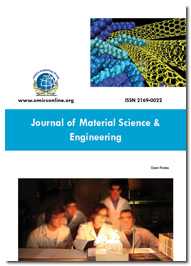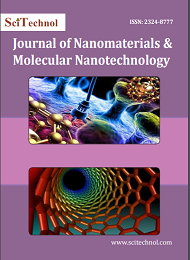Theme: Current Trends in Interfacial Polymerization Chemistry
Polymer Chemistry 2017
Polymer chemistry or macromolecular chemistry is concerned with the chemical synthesis and chemical properties of polymers. Polymer chemistry is a multidisciplinary science that deals with the chemical synthesis and chemical properties of polymers which were considered as macromolecules. Polymer Chemistry 2017 is comprised of the following sessions with 14 tracks and 56 sub sessions designed to offer comprehensive sessions that address current issues of Polymer Chemistry 2017.
Track 1: Polymer Synthesis and Polymerization
The study of Polymer Sciences begins with understanding the methods in which these materials are synthesized. Polymer synthesis is a complex procedure and can take place in a variety of ways. Addition polymerization describes the method where monomers are added one by one to an active site on the growing chain. Polymers are huge macromolecules composed of repeating structural units. While polymer in popular usage suggests plastic, the term actually refers to a large class of natural and synthetic materials. Due to the extraordinary range of properties accessible, Polymer Sciences have come to play an essential and ubiquitous role in everyday life - from plastics and elastomers on the one hand to natural biopolymers such as DNA and proteins on the other hand. The study of polymer sciences begins with understanding the methods in which these materials are synthesized. Polymer synthesis is a complex procedure and can take place in a variety of ways.
Track 2: Recent Advances in Polymer Chemistry
Polymer Chemistry is the branch of chemistry that deals with large molecules made up of repeating units referred to as monomers. The scope of Polymer Chemistry extends from oligomers with only a few repeating units to high polymers with thousands or millions of repeating units. Polymer Chemistry includes branches that mimic the divisions of the field of chemistry as a whole, with synthetic (preparation methods) and physical (property determination), biological (proteins, polysaccharides, and polynucleic acids), and analytical (qualitative and quantitative analysis) chemistry. Pre-existing polymers can also be modified by chemical means - including grafting or functionalization reactions. Polymerization and modification reactions can be employed to produce designer polymers as new materials with practically any desired properties
Polymer drug conjugates play an important role in the delivery of drugs. In the polymeric drug conjugates, the bioactive agent is combined covalently with polymer to achieve the efficient Polymeric Nanoparticle Delivery of bioactive agents in the required or specific period of time along with the enhancement of permeability and retention time. A large number of biodegradable polymers have been widely used in the area of Polymeric Nanoparticle Delivery.
A plenty of work has been explored for Polymer Chemistry and its biomedical applications such as tissue engineering, Polymeric Nanoparticle Delivery, polyphosphazene- anticancer drug conjugates with doxorubicin, paclitaxel, platinum complexes, methotrexate and gemcitabine for the Targeted drug delivery system etc.
Polymer-based Nano Materials, in particular, have been used extensively as carriers for both therapeutic and bio imaging agents and thus hold great promise for the construction of multifunctional theranostic formulations. Herein, we review recent advances in polymer-based systems for nanotheranostics, with a particular focus on their applications in cancer research. We summarize the use of Polymeric Nanoparticle Delivery, gene delivery, and photodynamic therapy, combined with imaging agents for magnetic resonance imaging, radionuclide imaging, and fluorescence imaging.
Track 3: Polymer Nanotechnology
Polymeric nanoparticles are predominantly prepared by wet synthetic routes. Several industrial processes will be described. Emphasis will be placed on the type of polymers and morphology structures that can be synthesized using each process. Controlled radical polymerization will be explored for their ability to provide structural control of polymer chains.
The extraordinarily large surface area on the nanoparticles presents diverse opportunities to place functional groups on the surface. Particles can be created that can expand/contract with changes in pH, or interact with anti-bodies in special ways to provide rapid ex-vivo medical diagnostic tests. Important extensions have been made in combining inorganic materials with polymers and in combining different classes of polymers together in nanoparticle form.
Advanced analytical techniques allow us to measure structure at ever-decreasing length scales. Computer simulations of the events occurring during particle formation have also benefited us in developing control strategies to produce structured particles.
Track 4: Synthetic Polymers
The established methods of polymer synthesis radical, anionic, cationic, coordination addition, Polymerization and stepwise condensation with rearrangement Polymerization. These methods are used to synthesize the majority of polymers used in the manufacture of commercially important plastics, fibres, resins and rubbers. Recent developments in methods of polymer synthesis are needed. Whether one takes a look at the commodity or specialty polymers area or considers areas of growing needs, such as polymers for the automotive, aerospace, electronics, communications, separations, packaging, biomedical, etc., advances in polymer synthesis are needed. Polymeric Nano Particle delivery materials as they are constantly being modified and improved, fine-tuned for current and additional needs, and more readily adopted by industry and the public, will have a vastly expanding influence on everyday life. However, lack of long-term support of meaningful size for basic research on all facets of Polymer Chemistry and engineering, with particular emphasis on making needed advances in polymer synthesis, could well stunt the growth of high technology in our country. Expanding this thought, lack of attention to basic research on polymer synthesis could help foster or insure that we won't have materials with performance profiles to meet requirements of emerging technologies and national needs, in a reasonably economic and timely fashion.
Track 5: Macromolecular Polymer Structure
Noncovalent interactions provide a flexible means of engineering new chemical entities with tailored properties. Specific interactions between functionalized small molecules and polymer chains bearing complementary binding sites can be used to engineer supramolecular complexes that display mesomorph polymer structure. This has been exploited to develop a range of functional materials including photonic band gap polymers, ionic conductors and donor-acceptor semiconductors polymers. Additionally, the deliberate association of polymers with surfactants in engineered, synthetic materials is increasingly motivated by the possibility of combining the stimuli-responsive self-assembly and solubilizing properties of surfactants with the intrinsic solution properties of polymers, such as rheology medication and facile coating of interfaces. In solution, the hydrophobic Nature of the surfactant compared to a hydrophilic polymer backbone leads to coil-globule transitions on decreasing solvent quality, surfactants cluster and force small length scale intrachain associations, causing a sharp reduction in the end-end chain distance, i.e collapse. These transitions qualitatively mimic the behaviour of proteins in which there is an aggregation of hydrophobic side chains that occurs as a precursor to collapse and eventual folding. At higher concentrations, interchange associations drive supramolecular ordering, leading to larger characteristic length scales and in some cases to the formation of gels or networks. Overall, there is a compelling need to understand the physical chemistry, structure and dynamics of supramolecular polymers, both in solution and in the melt. Our work focuses on detailed examination of composition and temperature dependent molecular and supramolecular structures in solutions and melts. We quantitatively characterize the thermodynamics and kinetics of polymer-small molecule binding, elucidating the dependence on surfactant chemistry and environmental variables. We strive to formulate coherent frameworks describing structure-property relationships in the systems considered.
Track 6: Functional Polymers
Functional polymers are macromolecules to which chemically bound functional groups are attached which can be utilised as reagents, catalysts, protecting groups, etc. The polymer support can be either a linear species which is soluble or a cross-linked species which is insoluble. For a polymer to be used as a support, it should have significant mechanical stability under the reaction conditions. Such properties of the support have greater importance for the functionalization reaction and for the applications of the functional polymers.
The polymer properties can be modified either by chemical reactions on pendant groups or by changing the physical Nature of the polymers, such as their physical form, porosity and solvation behaviour. Such properties have a great importance for the functionalization reactions for the eventual applications of the reactive polymers.
A functional polymer possesses the combination of the physical properties of the polymer support and the chemical reactivities of the attached functional group. The polymer support may be organic or inorganic and functional group attachment can be done either by physical interaction or through chemical bonds. The use of a functional polymer depends on the physical properties and the chemical constitution of the polymers. A functionalised polymer requires a structure which permits adequate diffusion of substrates to the reactive sites.
Track 7: Polymers for Catalysis and Energy Applications
Catalysis by polymers is the new intensively developing field of science. Polymer catalysis has become an independent and thriving branch of Polymer Chemistry. Extensive development of this field is attributed to success achieved in synthesis and investigation of so-called functional polymers as well as to success attained in homogeneous, metal complex catalysis. The fruitful cooperation of these two directions, namely the fixation of homogeneous catalysts or transition metal compounds on organic polymers, has led to the novel idea of heterogenization of homogeneous metal complex catalysts. Such catalysts obtained by the heterogenization of various polymeric supports by homogeneous complexes of transition metals, retain the advantages of both homogeneous (high selectivity) and heterogeneous (convenient manufacture) catalysts. Two aspects of catalysis involving polymers should be discussed: (1) the catalytic effect of functional groups of polymers and (2) the use of polymers as supports for homogeneous metal complexes. Such an approach is useful because it enables one to establish a relationship between enzyme-like, homogeneous and heterogeneous catalysis. Polymeric catalys is may be arbitrary divided on several parts:
1. Catalysis by linear polymers in solutions
2. Ion-Exchange resins as catalysts.
3. Catalysis by polymer-metal complexes.
4. Polymer-protected Nano sized catalysts.
Track 8: Bio catalysis in Polymer Chemistry
Bio catalytic pathways to Polymeric Materials are an emerging research area with not only enormous scientific and technological promise, but also a tremendous impact on environmental issues. Whole cell biocatalysts have been exploited for thousands of years. Historically biotechnology was manifested in skills such as the manufacture of wines, beer, cheese etc., where the techniques were well worked out and reproducible, while thebiochemical mechanism was not understood. While the chemical, economic and social advantages of bio catalysis over traditional chemical approaches were recognized a long time ago, their application to industrial production processes have been largely neglected until recent break-through in modern biotechnology (such as robust protein expression systems, directed evolution etc). Subsequently, in recent years, biotechnology has established itself as an indispensable tool in the synthesis of small molecules in the pharmaceutical sector including antibiotics, recombinant proteins and vaccines and monoclonal antibodies.
Track 9: Bio-related Medical Polymers
Advanced polymeric Biomaterials continue to serve as a cornerstone of new medical technologies and therapies. The vast majority of these materials, both natural and synthetic, interact with biological matter without direct electronic communication. However, biological systems have evolved to synthesize and employ naturally-derived materials for the generation and modulation of electrical potentials, voltage gradients, and ion flows. Bioelectric phenomena can be interpreted as potent signalling cues for intra- and inter-cellular communication. These cues can serve as a gateway to link synthetic devices with biological systems. This progress report will provide an update on advances in the application of electronically active Biomaterials for use in organic electronics and bio-interfaces. Specific focus will be granted to the use of natural and synthetic biological materials as integral components in technologies such as thin film electronics, in vitro cell culture models, and implantable medical devices. Future perspectives and emerging challenges will also be highlighted.
First, Nature must be able to design and synthesize biologically-derived materials and assemble those species into useful structures that can harvest, sense, transduce, and manipulate electrical signals. Second, synthetic electronic devices may be designed to precisely measure physical aspects of bioelectric processes such as ion flows and voltage gradients in biological systems; quantifying these phenomena provides insight into the underlying physiological mechanisms. Third, pathologies in biological function and deviations from homeostasis can be mitigated by supplying exogenous electrical cues. These assertions provide a framework that motivates the design of numerous technologies ranging from hybrid inorganic-organic electronic devices to electronically active medical implants. Materials selection and the subsequent quality of the biotic-abiotic interface play central roles in the prospective success and impact of many of these emerging technologies. This progress report will highlight recent progress in biomaterials-based electronics with an emphasis on the following topics:
- Unique optoelectronic properties of biologically-derived materials
- Novel soft matter for interfacing synthetic devices with cells in vitro.
- Electronically active Biomaterials for implantable medical devices.
Track 10: Polymers in Biochemistry
Proteins are linear polymers built of monomer units called amino acids. The construction of a vast array of macromolecules or polymer structure from a limited number of monomer building blocks is a recurring theme in biochemistry. The function of a protein is directly dependent on its three dimensional structure remarkably, proteins spontaneously fold up into three-dimensional structures that are determined by the sequence of amino acids in the protein polymer. Thus, proteins are the embodiment of the transition from the one-dimensional world of sequences to the three-dimensional world of molecules capable of diverse activities.
Proteins contain a wide range of functional groups. These functional groups include alcohols, thiols, thioethers, carboxylic acids, carboxamides, and a variety of basic groups. When combined in various sequences, this array of functional groups accounts for the broad spectrum of protein function. For instance, the chemical reactivity associated with these groups is essential to the function of enzymes, the proteins that catalyse specific chemical reactions in biological systems
Track 11: Polymers for Separation
Polymers become more miscible as the temperature is lowered, Liquid-liquid phase separation is assumed. If one of the components crystallizes, quite different phases emerge. Occasionally, upper critical solution temperatures (UCM) are observed for blends at some lower temperature range. Typical data may be obtained by raising the temperature rapidly from some temperature in the totally miscible range to some higher temperature, and observing changes via optical clarity and microscopy. Particular molecular weights for the two polymers in question. Different molecular weights result in different positions of the phase, and different maximum temperatures of mutual miscibility. Here, the temperature and the composition of a particular polymer pair is varied.
The Order-Disorder Transition
The case for block copolymers is significantly different. The molecular weights of the blocks and the overall composition of the block copolymer cannot be varied independently. Therefore, a classical phase diagram, cannot exist, the result has been a plethora of new notation.
Some of the terms used for the temperature of phase separation in block copolymers include the order-disorder (ODT) or the micro phase separation transition (MST). c Z represents the heat of mixing per chain. Other notation in common use is the narrow interphase approximation (NIA) which means that one is in the strong segregation regime, i.e., far from the MST. Closer to the MST, one speaks of the weak segregation regime. At the MST, other people talk about an upper critical ordering temperature (UCOT) and a lower critical ordering temperature (LCOT). While most polymer blends exhibit a LCST, most block polymers exhibit an UCOT. An UCOT implies a nucleation and growth mechanism for the kinetics of phase separation. Whether one speaks of a LCST and an UCST or a LCOT and an UCOT, it must be noted that the UCST and UCOT appear at lower temperatures than the corresponding LCST and LCOT, respectively
Track 12: Polymer Technology
The early developments in Polymer Technology occurred without any real knowledge of the molecular theory of polymers. The idea that the Structure of Molecules in Nature might give an understanding of plastics was put forward by Emil Fischer, who in 1901 discovered that natural polymers were built up of linked chains of molecules. It was not until 1922 that the chemist Herman Staudinger proposed that not only were these chains far longer than first thought, but they were composed of giant molecules containing more than a thousand atoms. He christened them ‘macromolecules’, but his theory was not proved until 1935 when the first plastic was created with a predictable form. This was the first synthetic fibre, nylon.
Polymer, meaning literally many parts, is a large organic chemical molecule (macromolecule), consisting of a combination of many small chemical molecules known as monomers. For example, polyethylene (PE), – CH2 – CH2 – CH2 – - - - -– CH2 – CH2 –, consists of many ethylene, CH2= CH2, monomers. The process of combining monomers together to yield a macromolecule is known as polymerisation. The polymerization process for the manufacture of phenol formaldehyde is an exothermic one and is controlled by a batch reactor as the viscosity of the material changes rapidly. The raw materials for the process phenol, formaldehyde and the catalyst are mixed in a jacketed autoclave , which is also termed as a resin kettle. Inside the autoclave, the mixture is heated with steam. Water cooling and refluxing remove the excess heat of reaction. During the initial stages of the reaction , the heavy viscous resins settle as the bottom layer, with an aqueous layer on top. A combination of heat and vacuum in the resin kettle (autoclave) enables the dehydration of the reaction mixture.
Track 13: Biochemical Degradation of Polymers
The Organic Evolution high polymers ranging from natural cellulose to vinyls, acrylates, polyamides and polyesters, contain essential elements for nutrition of plants and animals. The enzyme systems present in the organisms can attack these organic materials by virtue of specificity or adaptation, depending upon the chemical constitution and Polymer Structure. It was previously noted that certain of these polymers were liable to microbial attack, and this posed a problem in their general use as electrical insulation and protective coatings. The evaluation of the relative resistance of polymers to fungi and bacteria has been a subject of investigation for a long time but the chemical and mechanistic approach has hardly been undertaken.
The chemically reactive groupings present in the high polymers are inaccessible to microbial attack due to high intermolecular forces; consequently, gross degradation was not observable and almost all high polymers were found to have fair to excellent resistance to micro-organisms, with the exception of cellulose nitrate, polyvinyl acetate, casein, and some natural and synthetic rubbers. Furthermore, the synthetic plastics with required mechanical properties could be adapted to a particular use by the judicious incorporation of fungicides and bactericides. However, the plasticizers, which are used to modify the mechanical properties of these polymers, have been found to undergo biological degradation. A relationship has been found to exist between the chemical groups and the overall resistance to microbial attack of these monomeric plasticizers.
Track 14: Polymer Therapeutics: Concepts and Applications
Polymer therapeutics encompasses polymer–protein conjugates, drug–polymer conjugates, and supramolecular drug-delivery systems. Numerous polymer–protein conjugates with improved stability and pharmacokinetic properties have been developed, for example, by anchoring enzymes or biologically relevant proteins to polyethylene glycol components (PEGylation). Several polymer–protein conjugates have received market approval, for example the PEGylated form of adenosine deaminase. Coupling low-molecular-weight anticancer drugs to high-molecular-weight polymers through a cleavable linker is an effective method for improving the therapeutic index of clinically established agents, and the first candidates have been evaluated in clinical trials, including, N-(2-hydroxypropyl) methacrylamide conjugates of doxorubicin, camptothecin, paclitaxel, and platinum (II) complexes. Another class of polymer therapeutics are drug-delivery systems based on well-defined multivalent and dendritic polymers. These include polyanionic polymers for the inhibition of virus attachment, polycationic complexes with DNA or RNA (polyplexes), and dendritic core–shell architectures for the encapsulation of drugs. In this Review an overview of polymer therapeutics is presented with a focus on concepts and examples that characterize the salient features of the drug-delivery systems.
Track 15: Characterization of Polymers
Polymer Characterization includes determining molecular weight distribution, the molecular structure, the morphology of the polymer, Thermal Properties, mechanical properties, and any additives. Molecular Characterization also includes the development and refinement of analytical methods with statistical models which help to understand phase separation and phase transistion of polymers. The results achieved hereof can be eventually applied to optimize the experimental conditions during analyses. We have multiple approaches for Polymer Characterization. The following is a list of the most common techniques we use.
Molecular weight analysis is often determined by one of the following methods:
- Gel Permeation Chromatography (GPC)
- Dilute Solution Viscosity Testing (IV)
- Melt Flow Index Testing (MFI)
Molecular Structure determines if a polymer is a homopolymer or a copolymer, for example. Methods we use for this analysis include:
- Fourier Transform Infrared Spectroscopy (FTIR)
- Nuclear Magnetic Resonance Spectroscopy (NMR)
We use the following Analytical Method to determine the morphology:
- Scanning Electron Microscopy (SEM)
- Transmission Electron Microscopy (TEM)
- Atomic Force Microscopy (AFM)
The following testing techniques can be used to answer those questions:
- Differential Scanning Calorimetry (DSC)
- Rheology Testing
- Thermogravimetric Analysis (TGA)
- Dynamic Mechanical Testing (DMA)
We determine Physical Properties in the following ways:
- Tensile Testing
- Flexural Testing
- Compression Testing
- Durometer Testing
- Specific Gravity & Density Determination
Track 16: Solid Waste Management of Polymers
The controlled combustion of polymers produces heat energy. The heat energy produced by the burning plastic municipal waste not only can be converted to electrical energy but also helps burn the wet trash that is present. Paper also produces heat when burned, but not as much as do plastics. On the other hand, glass, aluminium and other metals do not release any energy when burned. The disposal of polymer solid waste by means other than landfilling is necessary. The various approaches source reduction, incineration; degradation, composting, and recycling-all have their roles and must be employed in an integrated manner. Where appropriate, recycling hasecological advantages, but its application is dependent upon the feasibility of collection, sorting, and/orcompatibilization of resulting mixtures to produce economically viable products. The practice should be encouraged by societal or legislative pressure which recognizes that the cost of disposal should be a factor in determining the cost of a product.
Track 17: Marketing of Polymers
ConferenceSeries LLC LTD invites all the participants from all over the world to attend “2nd International Conference and Exhibition on Polymer Chemistry’’ during November 15-17, 2017 San Antonio, Texas, USA which includes prompt keynote presentations, Oral talks, Poster presentations and Exhibitions.
While much research and product development in industry is product oriented, it requires scientists with a grasp of the foundations of chemistry, creativity, the ability to work together, and enjoy seeing the practical applications of their work. Polymer Chemistry 2017 covers all the aspects of related field researchers, The forum of Scientists, and students from all corners of the globe, come together to discuss about polymer science and its advances.
Each session of the meeting will be included with expert lectures, poster and discussions, join us to design sustainable development processes, innovations by which and how these strategies drive new policies, advances the business and sustainability in drug production for further health care protection of lives. We are glad to invite you on behalf of organizing committee to join us, where you are the decision maker for future.
Target Audience for Polymer Chemistry 2017:
Eminent Scientists/ Research Professors in the field of polymer chemistry, Junior/Senior research fellows, Students, Directors of polymer research companies, Chemical Engineers, Members of different physics and Chemistry associations.
Polymers plays a vital role in our lives because of its uniqueness in properties and extended application in industries, packaging, sports, medicine, perfumes and preservatives, plastics, fuels, toys etc. Polymer chemistry or macromolecular chemistry is concerned with the chemical synthesis and chemical properties of polymers. Polymer chemistry is a multidisciplinary science that deals with the chemical synthesis and chemical properties of polymers which were considered as macromolecules. Plastics are also used in the manufacture of Prosthetic devices and surgical equipment. Furthermore, polymer chemistry is quite a broad field and has expanded to include overlapping with biopolymeric materials and materials chemistry.
The diversity of use is growing day by day.The history of Biopolymer is not a long one. They are beginning to emerge as a result of needing to be more responsible in taking care of the world we live in. Thus, the recent emergence of bio-based products rather than petroleum or natural gas based products. Various reasons are associated with the research and development of Biopolymers. The use of biopolymers could markedly increase as more durable versions are developed, and the cost to manufacture these bio-plastics continues to go fall. Bio-plastics can replace conventional plastics in the field of their applications also and can be used in different sectors such as food packaging, plastic plates, cups, cutlery, plastic storage bags, storage containers or other plastic or composite material items you are buying and therefore can help in making environment sustainable.
Market Analysis:
Polymer Chemistry with combinatorial techniques, parallel experimentation and high-throughput methods represent a very promising approach in order to speed up the preparation and investigation of new polymeric materials: a large variety of parameters can be screened simultaneously resulting in new structure/property relationships. The field of polymer research seems to be perfectly suited for parallel and combinatorial methods due to the fact that many parameters can be varied during synthesis, processing, blending as well as compounding. In addition, numerous important parameters have to be investigated, such as molecular weight, polydispersity, viscosity, hardness, stiffness and other application-specific properties. A number of corresponding high-throughput techniques have been developed in the last few years and their introduction into the commercial market further boosted the development. These combinatorial approaches can reduce the time-to-market for new polymeric materials drastically compared to traditional approaches and allow a much more detailed understanding of polymers from the macroscopic to the nanoscopic scale. Here we provide an overview of the present status of combinatorial and parallel polymer synthesis and high-throughput screening. As there is need for eradication of polymers, there is increase in growth of industries for Biopolymers. Biopolymers have found wide acceptance in various industries, on account of its distinguished environment friendly properties. Biopolymers are now an important part of every sector Food tech, nanotech, chemistry, medical, agriculture etc.
The global engineering resin and polymer alloy/blend market reached 24.1 billion pounds in 2014. The market is projected to increase to over 25.2 billion pounds by 2015 and nearly 31.4 billion pounds in 2020, with a compound annual growth rate of 4.5%. Analyses of global market trends, with data from 2014, estimates for 2015, and projections of compound annual growth rates (CAGRs) through 2020.Segmentation of resins into a wide variety of applications as well as selected commodity thermoplastics and thermosets.
Discussion of the major materials involved in terms of plant capacities, markets by application, new technologies and products, and rationales for anticipated growth.
Coverage of key applications, including automotive segmented by under-the-hood, external and interior products; electrical/electronic markets; medical devices/products; building/construction materials; appliances; electronic enclosures; plastic rigid food packaging; and several key smaller markets such as optical lenses and aviation products. There is an increase of 20% (approx.) in the production of biopolymers products and bioplastics per year. Market of around 1.2 million tons in 2011 may see a five-fold increase in production volumes by 2016, to almost 6 million tonnes. By 2020 Bioplastics production could rise to 12 million tonnes.
Conference Highlights:
- Polymer Synthesis
- Advances in Polymer Synthesis
- Characterization of Polymers
- Macromolecular Polymeric Structure
- Polymers for Catalysis
- Polymers for Separation
- Functional Polymers
- Bio catalysis in Polymer Chemistry
- Bio-related Medical Polymers
- Polymers in Biochemistry
- Biochemical Degradation of Polymers
- Polymer Technology
- Solid Waste Management of Polymers
- Recent Advances in Polymer Chemistry
- Polymer Therapeutics: Concepts and Applications
Why to attend???
International Conference and Exhibition on Polymer Chemistry 2017 which is going to be the biggest conference dedicated to polymer chemistry focusing on ‘’Advanced and Recent developments in the area of Polymer Synthesis and characterization’’ and provides a premier technical forum for reporting and learning about the latest research and development, along with discussing new applications and technologies. Events include hot topics presentations from all over the world and professional networking with industries, leading working groups and panels.
Meet Your Objective Business sector with individuals from and around the globe concentrated on finding out about Polymer chemistry, this is the best chance to achieve the biggest collection of members from everywhere throughout the World. Conduct shows, disperse data, meet with current, make a sprinkle with another product offering, and get name acknowledgment at this occasion. Widely acclaimed speakers, the latest methods, strategies, and the most up to date overhauls in Polymer science and Engineering are signs of this meeting.
Why San Antonio? USA
The city is one of the top three leading destinations in the United States for conventions, business, and meetings. Las Vegas prides itself in being one of the busiest cities in America for conferences and conventions. There are several Green Chemistry Universities in USA. Mainly it includes Yale University which is the center for Green Chemistry.
Major Marketing Associations of Polymer Chemistry around the Globe
- British Plastics Federation
- European Council for Plasticizers and Intermediates
- American Coatings Association
- American Chemical Society (Division of Polymer Chemistry)
- American Physical Society Division of Polymer Physics (APS DPOLY)
- Polymer Division of the Royal Australian Chemical Institute (RACI Polymer Division)
- Belgian Polymer Group (BPG)
- Brazilian Polymer Association
- European Polymer Federation
- Bioenvironmental Polymer Society
Major Marketing Associations and Societies in USA
- Polymer Chemistry
- Division of Polymer Chemistry Inc., American chemical Society
- American Plastics Council (USA)
- Society of Plastics Engineers (USA)
- Society of the Plastics Industry (USA)
Target Audience:
Eminent Scientists/Research Professors, Junior/Senior research fellows, Students, Directors of companies, Engineers, Members of different physics associations.
Top Universities in USA:
- University of California
- Stanford University
- Harvard University
- University of Massachusetts Amherst
- Massachusetts Institute of Technology (MIT)
- North-eastern University
- Boston University
Meet Your Objective Business sector with individuals from and around the globe concentrated on finding out about Polymer chemistry, this is the best chance to achieve the biggest collection of members from everywhere throughout the World. Conduct shows, disperse data, meet with current, make a sprinkle with another product offering, and get name acknowledgment at this occasion. Widely acclaimed speakers, the latest methods, strategies, and the most up to date overhauls in Polymer science and Engineering are signs of this meeting.
Conference Highlights
- Polymer Synthesis and Polymerization
- Polymers for Catalysis and Energy Applications
- Polymers for Separation
- Characterization of Polymers
- Macromolecular Polymeric Structure
- Bio catalysis in Polymer Chemistry
- Biochemical Degradation of Polymers
- Functional Polymers
- Bio-related Medical Polymers
- Polymer Technology
- Polymers in Biochemistry
- Recent Advances in Polymer Chemistry
- Solid Waste Management of Polymers
- Polymer Therapeutics: Concepts and Applications
- Marketing of Polymers
- Polymer Nanotechnology
- Synthetic Polymers
To share your views and research, please click here to register for the Conference.
To Collaborate Scientific Professionals around the World
| Conference Date | November 15-17, 2017 | ||
| Sponsors & Exhibitors |
|
||
| Speaker Opportunity Closed | Day 1 | Day 2 | Day 3 |
| Poster Opportunity Closed | Click Here to View | ||
Useful Links
Special Issues
All accepted abstracts will be published in respective Our International Journals.
- Journal of Material Sciences & Engineering
- Journal of Nanomaterials & Molecular Nanotechnology
- Journal of Physical Chemistry & Biophysics
Abstracts will be provided with Digital Object Identifier by







































































